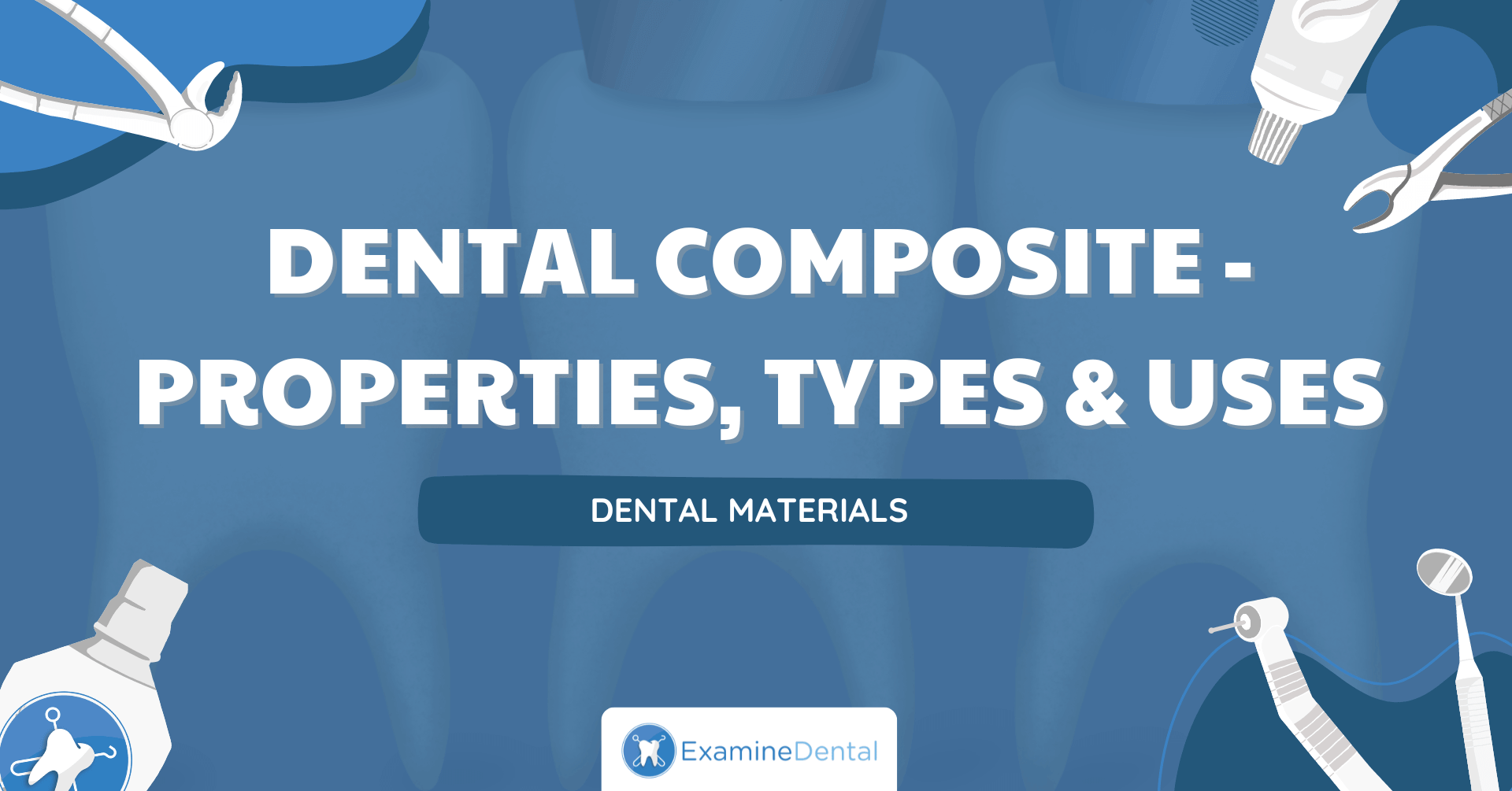
Dental Composite – Properties, Types and Uses
Contents
ToggleDental Composite - Properties, Types and Uses
- Last updated September 8, 2025
Objectives
By the end of these revision notes, you should:
What are dental composites?
A composite describes a material that is a mixture of two or more materials. These materials contribute to the properties of the material and exist in their own discrete form. Dental resin composites are one of the most widely used dental materials and are used in a variety of ways including as a filling material and for indirect restorations.
Indications and Contraindications
There are multiple indications for composites highlighted below. There are also a number of contraindications/situations where caution is advised below.
|
Indications
|
Contraindications
|
|---|---|
|
Direct restorative material for anterior and posterior teeth
|
Large restorations - the larger the restoration, the greater the degree of polymerisation shrinkage (see below) and associated complications
|
|
Minimally-invasive dentistry
|
Parafunctional habits - composites have variable wear resistance depending on the filler content
|
|
Aesthetic cases
|
Deep gingival restorations - if a restoration extends under the gingivae, then it is very difficult to ensure good adaptation and isolation
|
|
Veneers
|
Lack of enamel - the bond to enamel is far superior than the bond to dentine
|
|
Fissure sealants
|
Poor moisture control
|
|
Core buildups
|
|
|
Indirect restorations
|
|
|
Metal allergies
|
|
Composition
There are three key components in dental composites:

🚨 Access Restricted

Subscribe to access ALL revision notes and cheat sheets!
We provide a wide range of revision notes and cheat sheets to help you study and prepare for exams! To access all we have to offer, head over and subscribe to ExamineDental now to supercharge your revision!

